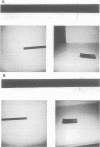Abstract
Vision theorists postulate that knowledge of objects in space is shaped by different spatial coordinate systems. An object may be represented by its location in relation to the viewer, or it may be represented by its own intrinsic spatial properties. When patients with left sided neglect fail to respond to stimuli on the left, it is not clear whether "left" refers to a viewer or an object centred reference frame. To uncouple these two reference frames, eight patients with neglect were asked to centre lines and objects in photographs. Viewer centred neglect would result in images appearing on the right side of photographs and object centred neglect would result in images appearing on the left. Four patients demonstrated viewer centred neglect and three demonstrated object centred neglect. One patient had variable performance, perhaps resulting from competing effects of both viewer and object centred neglect. Stimuli characteristics did not affect the spatial coordinate system in which neglect occurred. These results suggest that viewer centred and object centred reference frames are functionally dissociable, and that patients may have spatial neglect predominantly in either coordinate system.
Full text
PDF
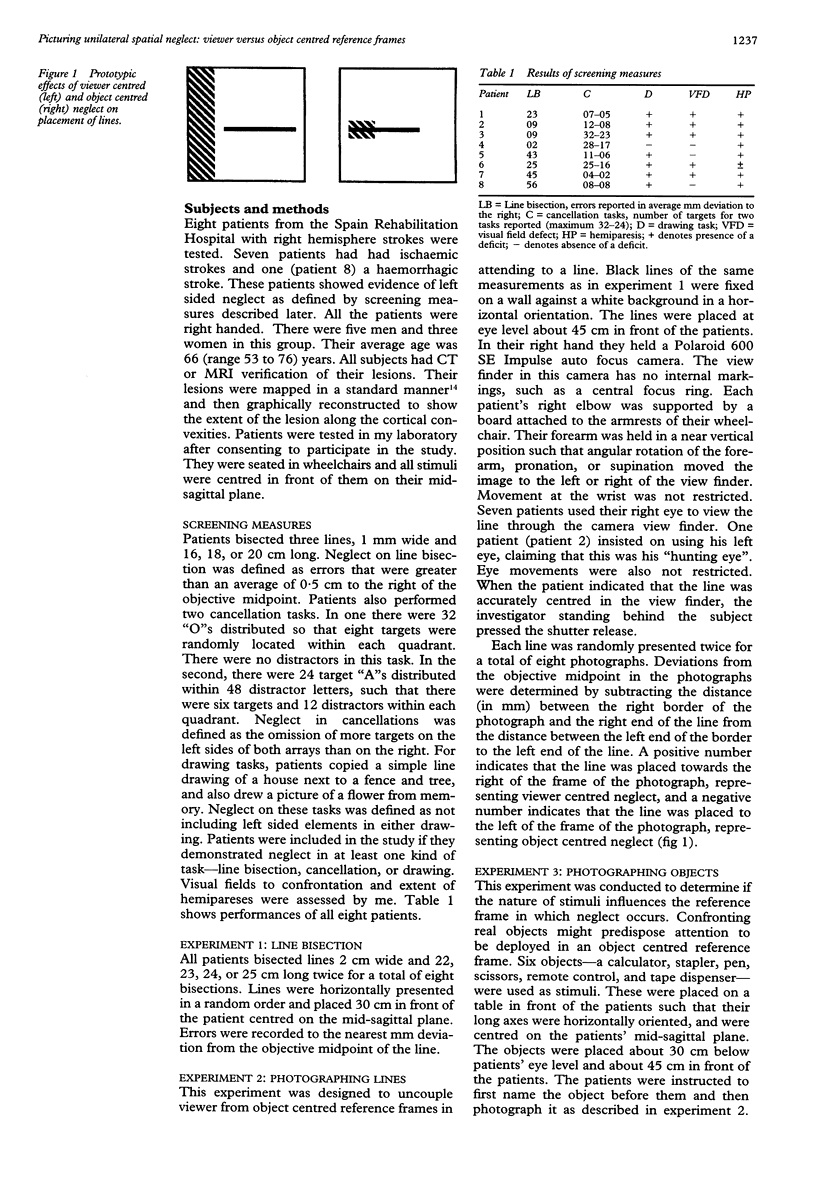
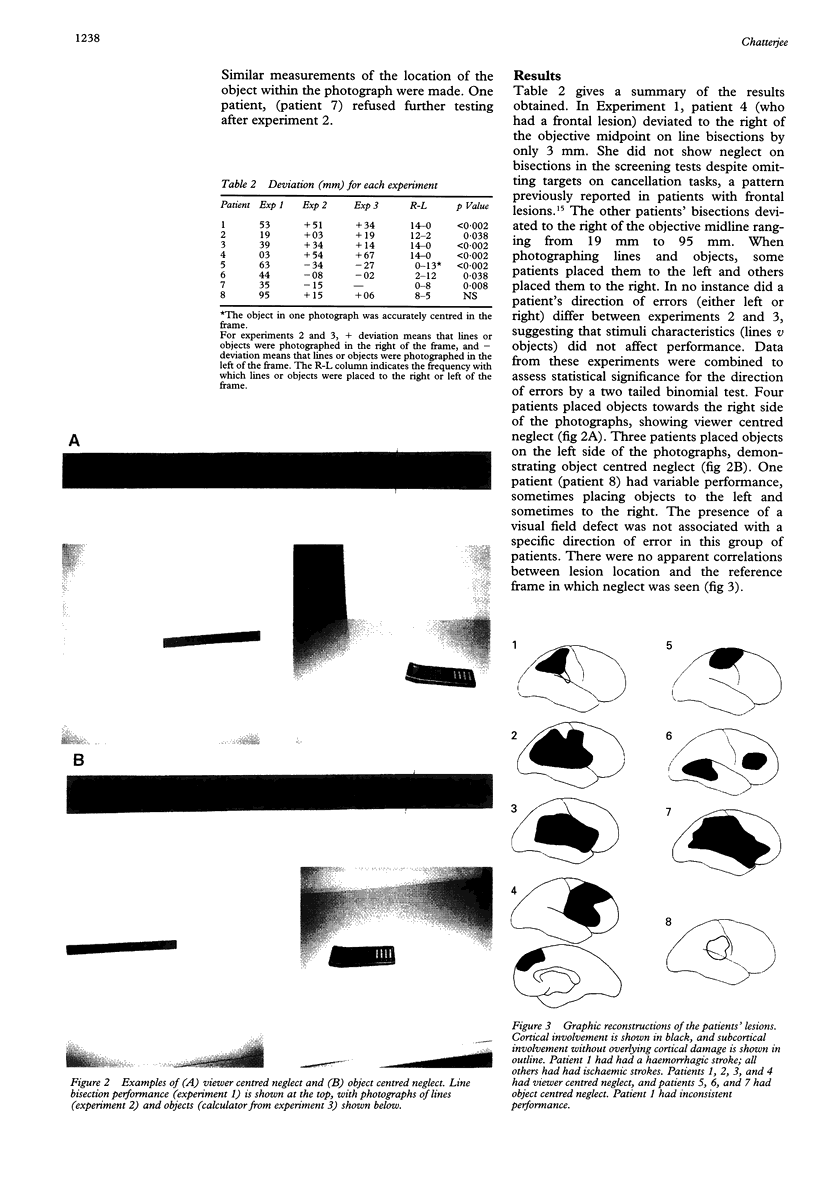
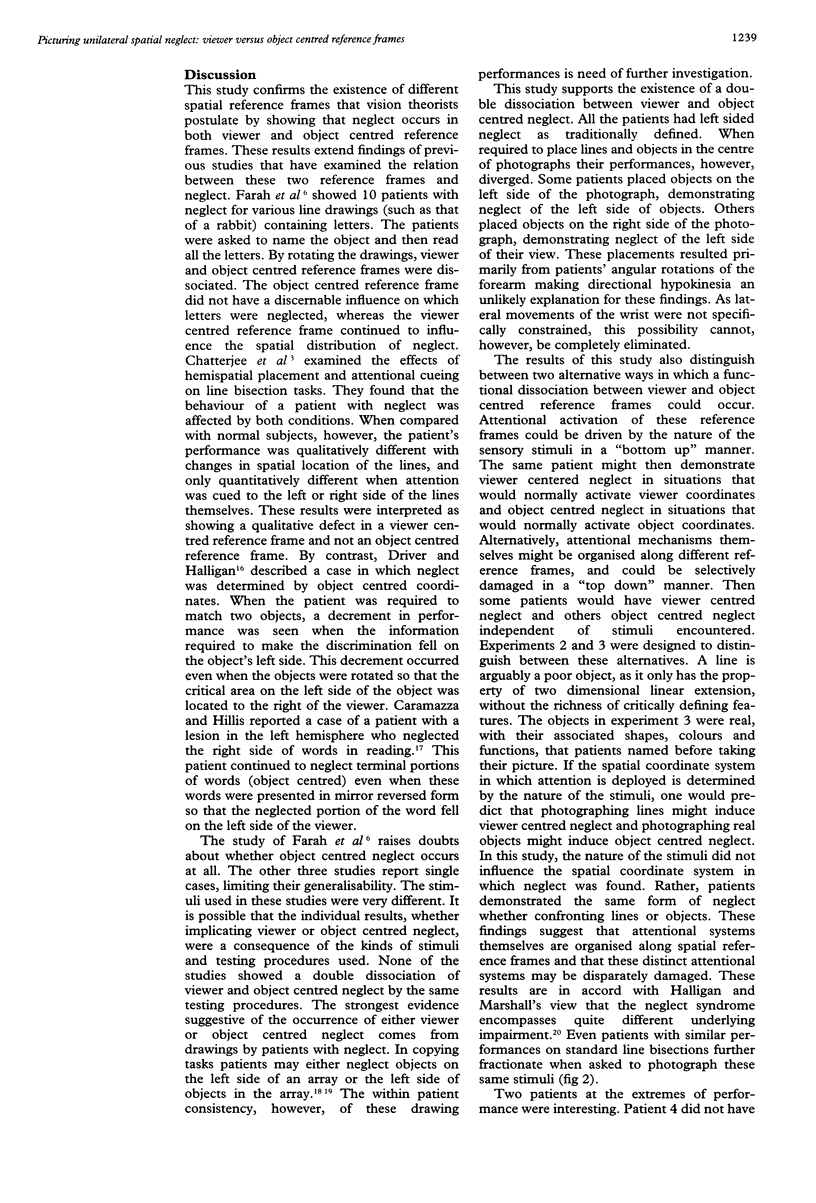
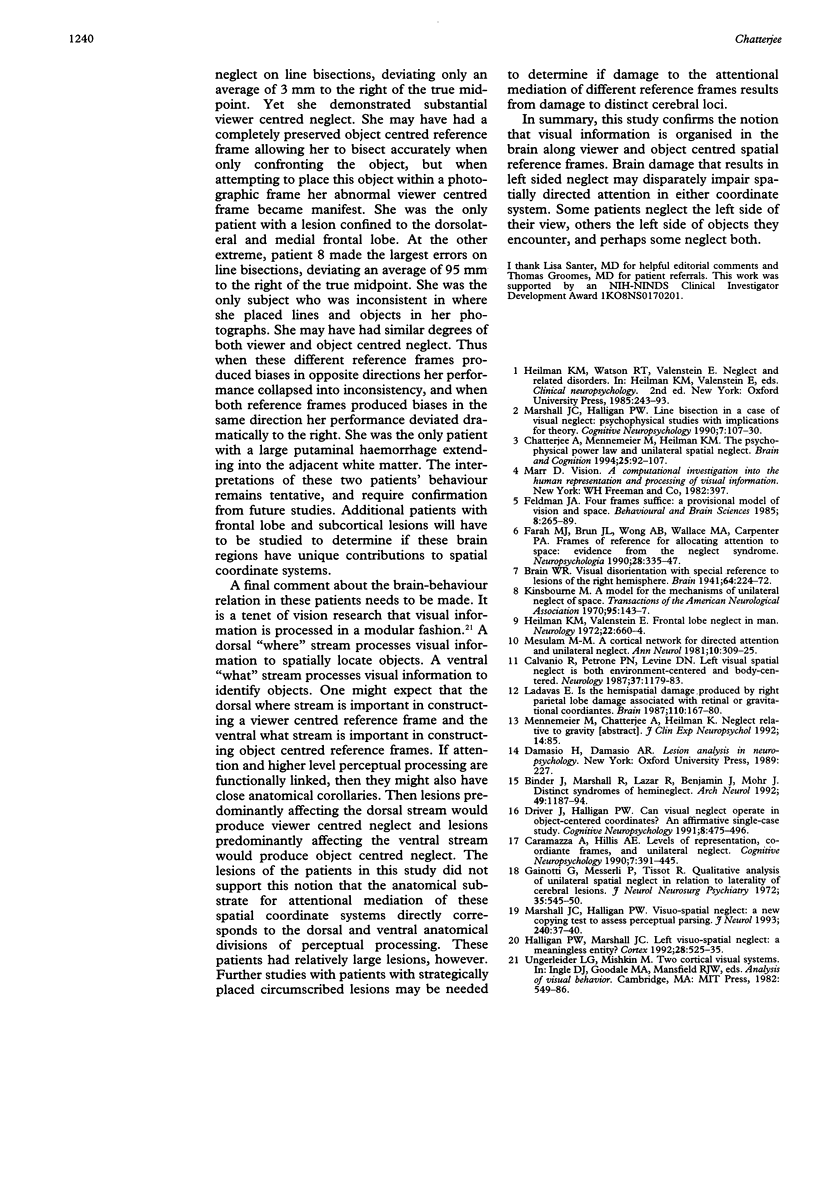
Images in this article
Selected References
These references are in PubMed. This may not be the complete list of references from this article.
- Binder J., Marshall R., Lazar R., Benjamin J., Mohr J. P. Distinct syndromes of hemineglect. Arch Neurol. 1992 Nov;49(11):1187–1194. doi: 10.1001/archneur.1992.00530350109026. [DOI] [PubMed] [Google Scholar]
- Calvanio R., Petrone P. N., Levine D. N. Left visual spatial neglect is both environment-centered and body-centered. Neurology. 1987 Jul;37(7):1179–1183. doi: 10.1212/wnl.37.7.1179. [DOI] [PubMed] [Google Scholar]
- Chatterjee A., Mennemeier M., Heilman K. M. The psychophysical power law and unilateral spatial neglect. Brain Cogn. 1994 May;25(1):92–107. doi: 10.1006/brcg.1994.1025. [DOI] [PubMed] [Google Scholar]
- Farah M. J., Brunn J. L., Wong A. B., Wallace M. A., Carpenter P. A. Frames of reference for allocating attention to space: evidence from the neglect syndrome. Neuropsychologia. 1990;28(4):335–347. doi: 10.1016/0028-3932(90)90060-2. [DOI] [PubMed] [Google Scholar]
- Gainotti G., Messerli P., Tissot R. Qualitative analysis of unilateral spatial neglect in relation to laterality of cerebral lesions. J Neurol Neurosurg Psychiatry. 1972 Aug;35(4):545–550. doi: 10.1136/jnnp.35.4.545. [DOI] [PMC free article] [PubMed] [Google Scholar]
- Halligan P. W., Marshall J. C. Left visuo-spatial neglect: a meaningless entity? Cortex. 1992 Dec;28(4):525–535. doi: 10.1016/s0010-9452(13)80225-0. [DOI] [PubMed] [Google Scholar]
- Heilman K. M., Valenstein E. Frontal lobe neglect in man. Neurology. 1972 Jun;22(6):660–664. doi: 10.1212/wnl.22.6.660. [DOI] [PubMed] [Google Scholar]
- Kinsbourne M. A model for the mechanism of unilateral neglect of space. Trans Am Neurol Assoc. 1970;95:143–146. [PubMed] [Google Scholar]
- Ladavas E. Is the hemispatial deficit produced by right parietal lobe damage associated with retinal or gravitational coordinates? Brain. 1987 Feb;110(Pt 1):167–180. doi: 10.1093/brain/110.1.167. [DOI] [PubMed] [Google Scholar]
- Marshall J. C., Halligan P. W. Visuo-spatial neglect: a new copying test to assess perceptual parsing. J Neurol. 1993 Jan;240(1):37–40. doi: 10.1007/BF00838444. [DOI] [PubMed] [Google Scholar]
- Mesulam M. M. A cortical network for directed attention and unilateral neglect. Ann Neurol. 1981 Oct;10(4):309–325. doi: 10.1002/ana.410100402. [DOI] [PubMed] [Google Scholar]



